- Home
- Robin Cook
Coma Page 11
Coma Read online
Page 11
Somewhat reluctantly Susan left her place by the wall and used the phone at the main desk to answer her page.
381 turned out to be the extension of the recovery room and Susan was quite surprised to be paged from there. She gave her name as Susan Wheeler, not Dr. Susan Wheeler, and said that she had been paged. The clerk told her to hold the line. He returned immediately.
“There’s an arterial blood gas to be drawn on a patient up here.”
“Blood gas?”
“Right. Oxygen, carbon dioxide, and acid levels. And we need it stat.”
“How did you get my name?” asked Susan, twisting the cord on the phone. She hoped it was by some sort of mistake that she had been called.
“I just do as I’m told. Your name is on the chart. Remember it’s stat.” The line went dead. The clerk had hung up before Susan could respond again. Actually she had little else to say. She replaced the receiver and walked back to Nancy Greenly’s bedside. Bellows was repositioning the paddles again. The shock swept through the patient’s body, the arms ineffectually flopping across the chest. It seemed both dramatic and pitiful at the same time. The monitor showed a normal rhythm.
“She’s got a good pulse,” said Cartwright at the groin.
“I think she’s holding her sinus rhythm better now that some of the potassium has gotten into her system,” said Bellows, his eyes glued to the monitor screen.
“Dr. Bellows,” said Susan during the lull in the action. “I got a call to draw an arterial blood gas on a patient in the recovery room.”
“Enjoy yourself,” said Bellows, distracted. He turned to Shergood. “Where in heaven’s name are those medical residents? God, when you need them they lie low. But just try to take someone to surgery and they hang around like a group of vultures, canceling your case because of a borderline serum porcelain.”
Cartwright and Reid forced a laugh for political reasons.
“You don’t understand, Dr. Bellows,” continued Susan. “I’ve never drawn an arterial blood gas. I’ve never seen one drawn.”
Bellows turned from the monitor to Susan. “Jesus Christ, as if I don’t have enough to worry about. It’s just like getting venous blood only you get it out of an artery. What the hell did you learn during the first two years of medical school?”
Susan felt a defensive surge; her face reddened.
“Don’t answer that,” added Bellows quickly. “Cartwright, head over with Susan and . . .”
“I’ve got that thyroidectomy you put me on with Dr. Jacobs in five minutes,” interrupted Cartwright, looking at his watch.
“Shit,” said Bellows. “OK, Dr. Wheeler, I’ll head over with you and show you how to do an arterial stick but not until things are reasonably quiet here. Things are looking a little better; I’ve got to admit that.” Bellows turned to Reid. “Send up another blood sample for a repeat potassium. Let’s see how we are doing. Maybe we are out of the woods.”
While she was waiting, Susan thought about Bellows’s last comment. He had used the pronoun we rather than saying that Nancy Greenly was out of the woods. It fit the pattern and she pondered about depersonalization. It also reminded her of Stark. He didn’t seem to care for Bellows’s pronouns either.
Monday
February 23
1:33 P.M.
“Some days are like this,” said Bellows, holding the door open for Susan as they left the ICU. “Lunch can be considered a luxury. Even a nice . . .” Bellows paused as they walked down the corridor. They were both eyeing the floor. Bellows was searching for a word. Then he changed his incompleted sentence. “On occasion it is even hard to find time to relieve oneself.”
“You meant to say ‘a nice shit,’ didn’t you?”
Bellows glanced at Susan. She looked up at him with a slight smile. “You don’t have to act differently on my account,” said Susan.
Bellows continued to study her face, which she carefully kept as neutral as possible. They walked in silence past the holding area for surgery.
“As I mentioned before, an arterial stick is just about the same as a venous stick,” said Bellows, changing the subject. He sensed the unnerving effect Susan had on him and he sought to regain the upper hand. “You isolate the artery, either the brachial, radial, or femoral, it really doesn’t matter which, with your middle and index fingers, like this . . .” Bellows held up his left hand and extended his middle and index fingers and pretended to palpate an artery in the air. “Once you have the artery between the fingers, you can feel the pulse. Then simply guide the needle in by feel. The best method is to let arterial pressure fill the syringe. In that way you can avoid air bubbles, which tend to distort the values.”
Bellows backed into the recovery room door, still gesturing the technique of the arterial stick. “Two important points: you have to use a heparinized syringe to keep the blood from clotting, and you have to keep pressure over the site for five minutes after the stick. The patient can get a frightful hematoma from an arterial stick if the pressure part is forgotten.”
To Susan the recovery room seemed superficially similar to the ICU except that it was brighter, noisier, and more crowded. There were about fifteen to twenty spaces designated for beds. Each space had a complement of equipment built into the wall, including monitors, gas lines, and suction lines. Most of the spaces were occupied by high beds with the side rails pulled up. In each bed was a patient with fresh bandages over some part of his body. Bottles of intravenous fluid were clustered on the tops of poles, like some hideous fruit on leafless trees.
New patients were arriving, others leaving, causing mini traffic jams of moving beds. Conversation flowed freely from those who worked there and felt at home in the environment. There was even some occasional laughter. But there were also some groans, and a baby was wailing an unheeded lament in a crib by the nurses’ station. Some of the beds had groups of doctors and nurses busily engaged in adjusting the hundreds of lines, valves, and tubes. Some of the doctors were dressed in wrinkled scrub suits, stained with all sorts of secretions, although blood was the most prevalent. Others wore long white coats starched painfully stiff. It was a busy place, a crossroad filled with patients, charts, motion, and talk.
Bellows was anxious to dispense with the task ahead and approached the main desk, which was strategically placed in the center of the large room. In response to his inquiry he was handed a tray with a heparinized syringe and directed to one of the recovery room beds to the left, opposite the door through which they had entered.
“Why don’t I go ahead and do this one, and you do the next one,” said Bellows. Susan nodded in agreement as they approached the bed. They could not see the patient because of the people standing in the way. There were several nurses on the left, two doctors in scrub suits at the foot, and a tall black doctor in a long white coat on the right. As Bellows and Susan drew near, it was obvious that the latter individual had been talking although at that moment he was adjusting the pressure setting on the respirator. Susan sensed the emotional climate instantly. Both of the doctors in scrub suits were obviously intensely concerned. The smaller individual, Dr. Goodman, was visibly shaking. The other, Dr. Spallek, had his mouth angrily set with clenched teeth, audibly breathing through his nostrils as if he were about to attack the next person in his path.
“There’s got to be some sort of an explanation,” snarled the infuriated Spallek. He took hold of his face mask still tied around his neck and yanked it free, snapping the cord. He flung it to the floor. “That doesn’t seem too much to ask,” he hissed before abruptly turning away and leaving. He collided with Bellows, who miraculously managed to juggle the small tray he was carrying without dropping any of its contents. There were no words of apology from Dr. Spallek. He crossed the recovery room and blasted open the doors to the hall.
Bellows went directly to the left of the bed and put down the tray. Susan advanced warily, watching the expressions of the remaining people. The black doctor straightened up and his dark eyes foll
owed the exit of the irate Dr. Spallek. Susan was immediately taken by the imposing image of the man. His tag gave his name: Dr. Robert Harris. He was tall, well over six feet, his dark hair textured into a restrained Afro. His blemishless tawny skin shone, and his face reflected a curious combination of culture and restrained violence. His movements were calm, almost to the point of deliberate slowness. As his eyes returned from watching Spallek’s exit they passed over Susan’s face before returning to the respirator at the side of the bed. If he had noticed Susan, he gave no hint whatsoever.
“What did you use for the pre-op, Norman?” asked Harris, pronouncing each word carefully. He had a cultured Texas accent—if that were possible.
“Innovar,” said Goodman. The pitch of his voice was abnormally high and cracking under the strain.
Susan moved up to the foot of the bed where Spallek had been standing. She studied the crumpled man next to her, Dr. Goodman. He looked pale and his hair was matted with perspiration to his forehead. He had a prominent nose, which Susan saw in perfect profile. His deep-set eyes were riveted to the patient. He did not blink.
Susan looked down at the patient, her eyes wandering to the wrist which Bellows was prepping for the arterial stick. With an exaggerated double take, her eyes shot back to the face of the patient as recognition occurred. It was Berman!
In contrast to the tanned visage Susan recalled from their meeting in room 503 only ninety minutes ago, Berman’s face was a dusky gray color. The skin was pulled taut over his cheekbones. An endotracheal tube protruded from the left side of his mouth and some dried secretion was crusted along his lower lip. His eyes were closed but not completely. His right leg was in a huge plaster cast.
“Is he all right?” blurted Susan looking from Harris to Goodman. “What happened?” Susan spoke from emotion, without thinking; she sensed something was wrong and she reacted impulsively. Bellows was surprised at her sudden questions and looked up from his work, holding the syringe in his right hand. Harris straightened up slowly and turned toward Susan. Goodman’s eyes did not stray.
“Everything is absolutely perfect,” said Harris with a pronunciation suggesting an Oxford sojourn some time in his past. “Blood pressure, pulse, temperature all perfectly normal. However, he has apparently enjoyed his anesthetic slumber so much that he has decided not to wake up.”
“Not another one,” said Bellows, switching his attention to Harris and concerned that he was going to be saddled with another problem like Greenly. “What does the EEG look like?”
“You’ll be the first to know,” said Harris with a trace of sarcasm. “It’s been ordered.”
Comprehension for Susan was delayed by emotion, for hope was momentarily stronger than reason. But eventually it flooded over her.
“EEG?” asked Susan apprehensively. “You mean he’s like the patient down in the ICU?” Her eyes darted back and forth between Berman and Harris, then to Bellows.
“Which patient is that?” asked Harris, picking up the anesthesia record.
“The D&C mishap,” said Bellows. “You remember, about eight days ago, the twenty-three-year-old girl.”
“Well I hope not,” said Harris, “but it’s beginning to look that way.”
“What was the anesthesia?” asked Bellows lifting Berman’s right eyelid and glancing down into the widely dilated pupil.
“Neurolept anesthesia with nitrous,” said Harris. “The girl’s was halothane. If the problem is the same clinically, it wasn’t the anesthetic agent.” Harris looked up from the anesthesia record toward Goodman. “Why did you give this extra cc of Innovar toward the end of the case, Norman?”
Dr. Goodman did not respond immediately. Dr. Harris called his name again.
“The patient seemed to be getting too light,” said Goodman, suddenly breaking his trance.
“But why Innovar so late in the case? Wouldn’t fentanyl alone have been more prudent?”
“Probably. I should have used the fentanyl alone. The Innovar was just handy and I knew that I’d only use an additional cc.”
“Can’t something be done?” asked Susan with a hint of desperation. Images of Nancy Greenly streamed back with bits and pieces of the recent conversation with Berman. She could distinctly remember his vitality, which was in sharp contrast to the waxy, lifeless-appearing figure before her.
“It’s been done, whatever it was,” said Harris with finality, returning the anesthesia record to Goodman. “All we can do now is watch and see what kind of cerebral function returns, if any. The pupils are widely dilated and they do not react to light. That is not a good sign, to say the least. It probably means that there was extensive brain death.”
Susan experienced a sickening feeling rise up within herself. She shuddered and the feeling passed but she felt light-headed. Above all, she felt helplessly desperate.
“This is too much,” said Susan suddenly and with obvious emotion. Her voice quivered. “A normal healthy man with a minor peripheral problem ends up like a . . . like a vegetable. My God, this can’t go on. Two young people within just a couple of weeks. I mean, it’s an unacceptable risk. Why doesn’t the Chief of Anesthesia close the department? Something’s got to be wrong. It’s absurd to allow . . .”
Robert Harris’s eyes began to narrow as Susan began her tirade. Then he interrupted her with an obvious edge to his voice. Bellows’s mouth had dropped open in total dismay.
“I happen to be the Chief of Anesthesia, young lady. And who, may I ask, are you?”
Susan started to speak, but Bellows cut in nervously. “This is Susan Wheeler, Dr. Harris, a third-year medical student who is rotating on surgery, and, ah . . . we just wanted to get this blood drawn here, then we’ll be off.” Bellows recommenced his prep on Berman’s right wrist, stroking rapidly with the Betadine sponge.
“Miss Wheeler,” continued Harris in a condescending tone, “your emotionalism is out of place and frankly will not serve constructive purposes. What one needs in these cases is to establish a causal factor. I’ve just mentioned to Dr. Bellows that the anesthetic agent was different in these two cases. The anesthetic care was unimpeachable save for a few minor debatable points. In short, both these cases were obviously unavoidable idiosyncratic reactions to the combination of anesthesia and surgery. One needs to try to determine from these people if there is a way in order to forecast this kind of disastrous sequelae. To condemn anesthesia across the board and deprive the populace of needed surgery would be far worse than to accept a certain minimal risk involved in anesthesia. What . . .”
“Two cases in eight days is hardly a minimal risk,” interrupted Susan contentiously.
Bellows tried to catch Susan’s eye to get her to break off with Harris, but Susan was staring directly at Harris, converting her emotionalism to defiance.
“How many such cases have there been in the last year?” asked Susan.
Harris’s eyes scanned Susan’s face for several seconds before he responded. “I suddenly find this conversation somewhat akin to being cross-examined, and in that sense intolerable and unnecessary.” Without waiting for a response, Harris walked past Susan toward the recovery room door.
Susan turned to face him. Bellows reached for her right arm to try to shut her up. Susan fended him off. She called after Harris, “Without wishing to sound impertinent, it does seem to me that some questions need to be asked by someone, and something done.”
Harris stopped abruptly about ten feet from Susan and turned very slowly. Bellows shut his eyes tightly, as if he expected to receive a blow to the head.
“And I suppose that someone should be a medical student! For your information, in case you are planning to be our Socratic gadfly, there have been six cases prior to this present problem in the last few years. Now if I may have your permission, I will get back to work.”
Harris turned again and started for the door.
“I suppose your emotionalism serves constructive purposes,” called Susan. Bellows supported himself by leaning onto
the bed. Harris stopped for the second time, but he did not turn around. Then he continued, and he too blasted open the door to the hall.
Bellows put his left hand up to his forehead. “Holy fuck, Susan, what are you trying to do, commit medical suicide?” Bellows reached out and turned Susan around to face him. “That was Robert Harris, Chief of Anesthesia. Christ!”
Bellows commenced the prep for the third time, rapidly, nervously. “You know, just being here with you when you act like that makes me look bad. Shit, Susan, why did you want to get him pissed?” Bellows palpated the radial artery and then jammed the needle of the heparinized syringe into the skin on the thumb side of Berman’s wrist. “I’m going to have to say something to Stark before he hears about it through the grapevine. Susan, I mean, what’s the point of getting him mad? You obviously don’t have any idea what hospital politics are like.”
Susan watched Bellows performing the arterial stick. She consciously avoided looking at Berman’s sickly face. The syringe began to fill with blood spontaneously. The blood was a very bright crimson.
“He got mad because he wanted to get mad. I don’t think I was impertinent until that last question, and he deserved that.”
Bellows didn’t answer.
“Anyway I really didn’t want to make him angry . . . well, maybe I did in a way.” Susan thought for a few moments. “You see, I talked with this patient only an hour or so ago. He was the patient I had to leave the ICU for. It’s just so unbelievable; he was a functioning, normal human being. And . . . I . . . we had a conversation and I felt like I knew something about him. I even took a liking to him in a way. That’s what makes me mad or sad or both. And Harris, his attitude made it worse.”

 Shock
Shock Mutation
Mutation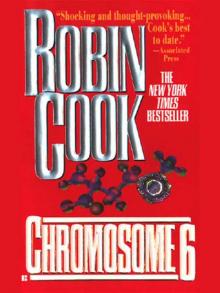 Chromosome 6
Chromosome 6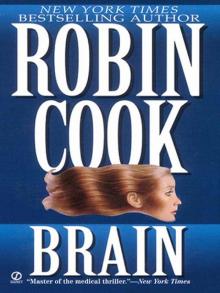 Brain
Brain Intervention
Intervention Invasion
Invasion The Legend of Parzival: The Epic Story of His Quest for the Grail
The Legend of Parzival: The Epic Story of His Quest for the Grail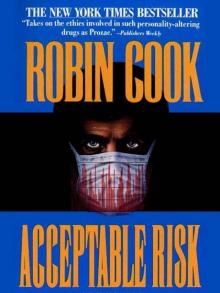 Acceptable Risk
Acceptable Risk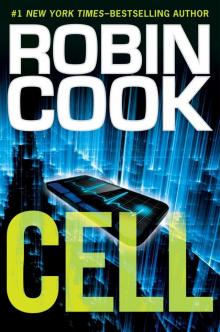 Cell
Cell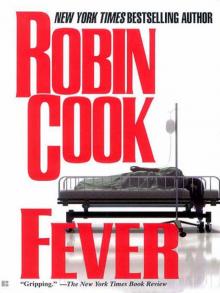 Fever
Fever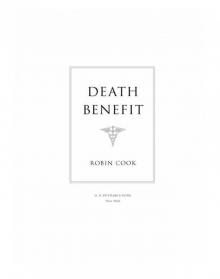 Death Benefit
Death Benefit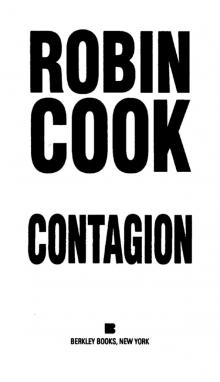 Contagion
Contagion Mindbend
Mindbend Coma
Coma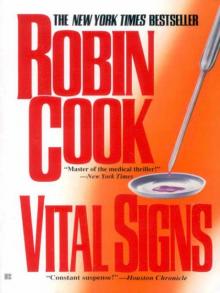 Vital Signs
Vital Signs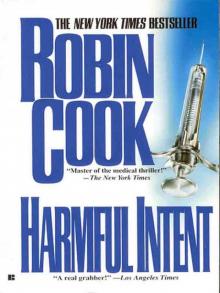 Harmful Intent
Harmful Intent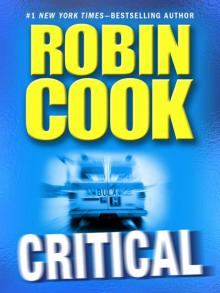 Critical
Critical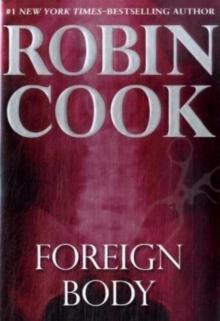 Foreign Body
Foreign Body Marker
Marker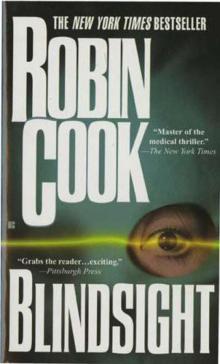 Blindsight
Blindsight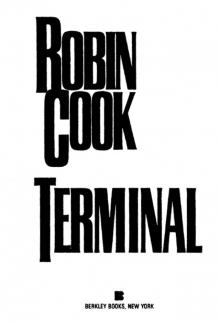 Terminal
Terminal Sphinx
Sphinx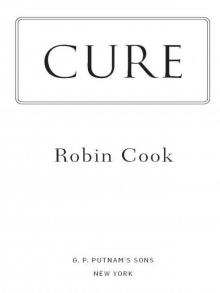 Fatal Cure
Fatal Cure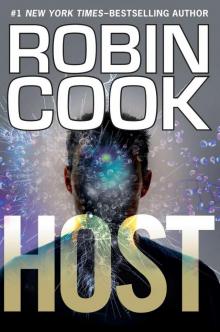 Host
Host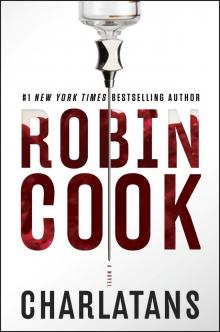 Charlatans
Charlatans Crisis
Crisis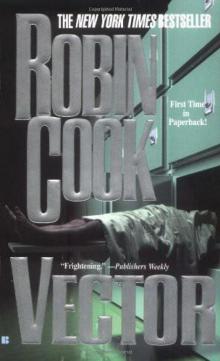 Vector
Vector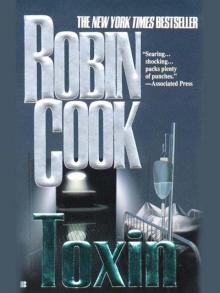 Toxin
Toxin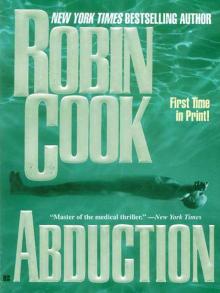 Abduction
Abduction Viral
Viral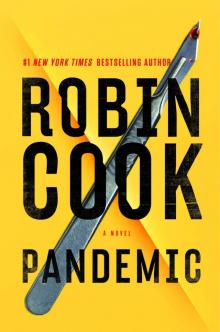 Pandemic
Pandemic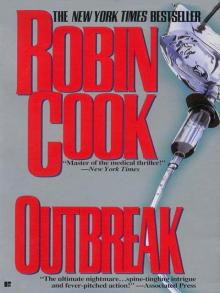 Outbreak
Outbreak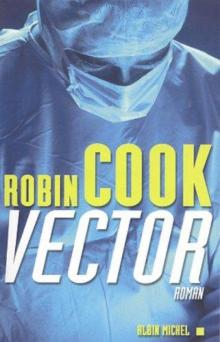 Vector js&lm-4
Vector js&lm-4 Godplayer
Godplayer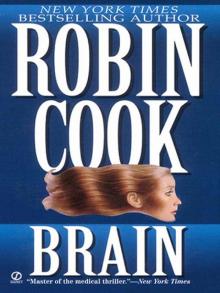 A Brain
A Brain Year of the Intern
Year of the Intern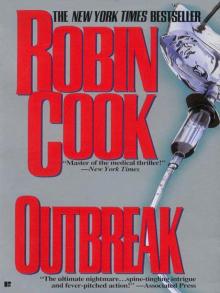 Outbreak dmb-1
Outbreak dmb-1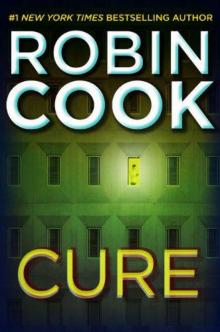 Cure
Cure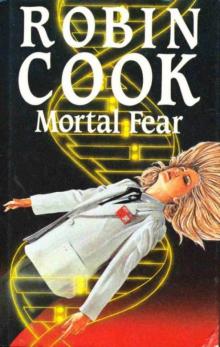 Mortal Fear
Mortal Fear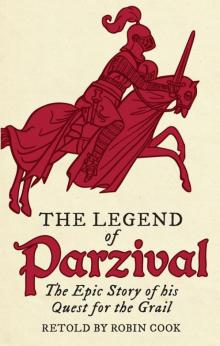 The Legend of Parzival
The Legend of Parzival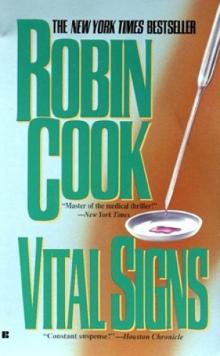 Vital Signs dmb-2
Vital Signs dmb-2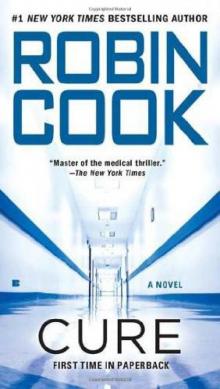 Cure (2010) sam-10
Cure (2010) sam-10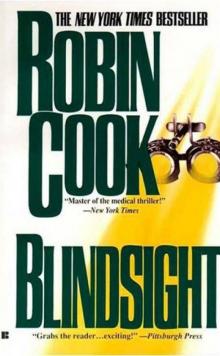 Blindsight sam-1
Blindsight sam-1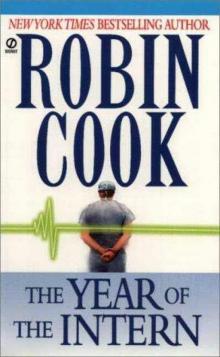 The Year of the Intern
The Year of the Intern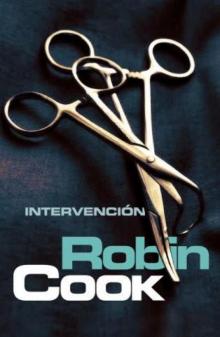 Intervention sam-9
Intervention sam-9 Foreign Body sam-8
Foreign Body sam-8